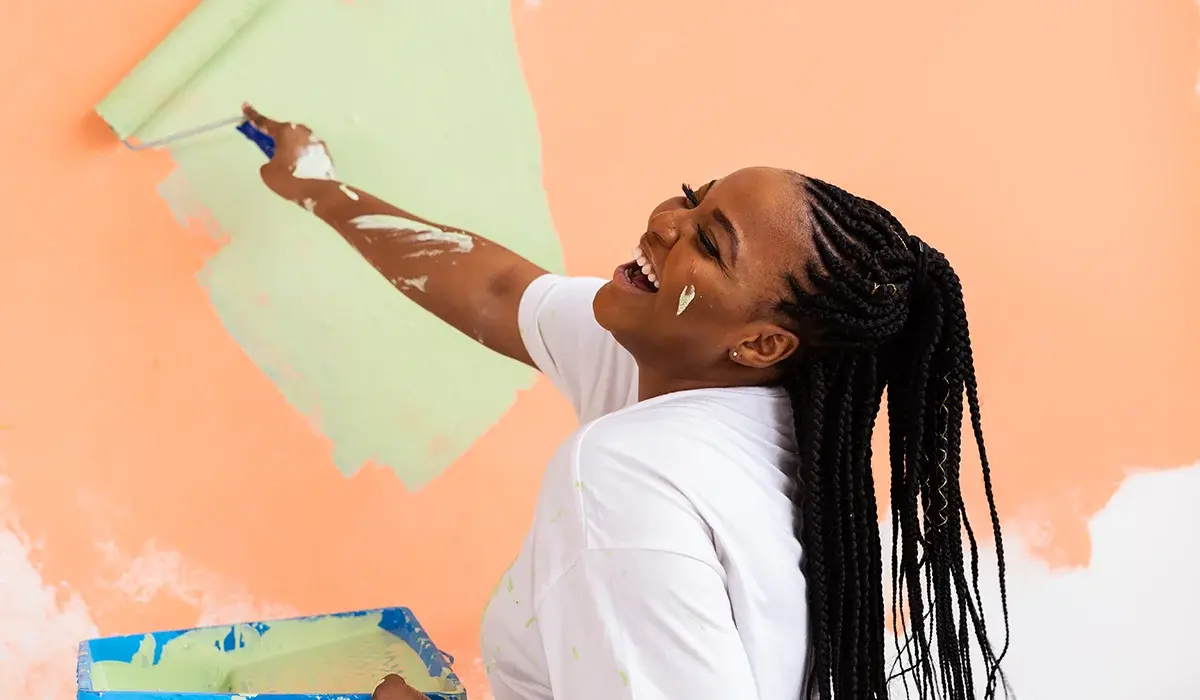Painting
Can You Paint Over Wallpaper? Yes—Here’s How

Paint Over Wallpaper Guide: Your Step-by-Step DIY Solution
Old wallpaper can make your walls look outdated, worn, or dull. Instead of tearing it down, why not paint over it? Painting wallpaper offers a fresh update without the stress of removal. This Paint Over Wallpaper Guide will help you determine when and how to take this DIY route.
We’ll show you how to prep your space, apply paint properly, and highlight the pros and cons. This article is perfect for homeowners looking to refresh their space quickly and affordably.
Can You Paint Over Wallpaper?
You can paint over wallpaper if it is smooth, stable, and free from rips or major damage. Many DIYers choose this option when wallpaper removal seems risky or time-consuming. For instance, removing paper from unfinished drywall may cause more harm than good.
On the other hand, certain types of wallpaper—like fabric-backed vinyl—should not be painted over. These materials may resist paint or cause peeling over time. Instead, remove them if possible.
When You Should Avoid Painting Over Wallpaper
Avoid painting over wallpaper if:
- It is peeling or bubbling in several areas.
- It has a highly textured surface you don’t want visible.
- The wallpaper is easy to remove and won’t damage the surface below.
Before proceeding, test a corner to see if the wallpaper peels easily. If it does, consider removing it instead.
Paint Over Wallpaper Guide: Step-by-Step Instructions
If you’ve decided to paint over wallpaper, follow these steps to get excellent results. This Paint Over Wallpaper Guideensures a clean, professional finish with minimal hassle.
Step 1 – Clean the Walls Thoroughly
Wipe your wallpaper with a damp cloth to remove dirt and dust. For greasy areas, use a diluted TSP solution. Avoid soaking the wall to prevent loosening the adhesive.
Let the wall dry for 24 hours before moving forward.
Step 2 – Repair Damaged Areas
Inspect for peeling seams or loose patches. Use wallpaper seam adhesive or spackle to fix these spots. Sand the wall if the wallpaper has texture you want to remove. Wipe away dust after sanding.
Step 3 – Tape Off Molding and Fixtures
Apply painter’s tape around baseboards, outlets, and molding. This step protects areas you don’t want to paint and keeps edges sharp.
Step 4 – Prime the Wallpaper
Always use an oil-based primer to seal the wallpaper properly. A water-based primer can soften wallpaper glue. Cut in corners with a brush and use a roller for large areas. Allow the primer to dry completely.
Step 5 – Apply Your Paint
Use at least two coats of high-quality paint for solid coverage. Let each coat dry fully before adding the next. Choose paint designed for interior walls for better durability and finish.
Supplies Checklist
Here’s everything you need to complete this project:
- Oil-based primer
- Interior wall paint
- Putty knife and spackle
- Painter’s tape
- Sandpaper (150–180 grit)
- Cleaning cloths and TSP
- Paintbrushes and roller
- Protective gear (goggles, gloves, mask)
Pros and Cons of Painting Wallpaper
Understanding the benefits and drawbacks helps you make an informed decision. Let’s explore both sides below.
Advantages of Painting Wallpaper
- DIY-friendly: This task is simple for beginners with basic tools and instructions.
- Cost-effective: It saves you money by avoiding professional wallpaper removal.
- Time-saving: You skip the labor-intensive step of tearing down wallpaper.
Drawbacks to Consider
- Seams May Show: Even after multiple coats, seams could remain visible.
- Removal Becomes Harder: Painted wallpaper is more difficult to remove later.
- Stubborn Patterns: Bold prints may require extra coats to fully conceal.
Despite these issues, many homeowners find painting wallpaper to be an easy, fast refresh.
Paint Over Wallpaper Guide Recap
Let’s summarize this Paint Over Wallpaper Guide in a few clear points:
- Paint only over wallpaper in good condition.
- Clean the walls and fix all loose seams.
- Use an oil-based primer to prevent peeling.
- Apply at least two coats of high-quality paint.
- Expect minor imperfections but enjoy a quick transformation.
This guide helps you make smart decisions and achieve a clean, modern wall finish. Painting over wallpaper doesn’t have to be hard when you follow the right steps.
Explore more news, home DIYs, and improvement tips on this website!
